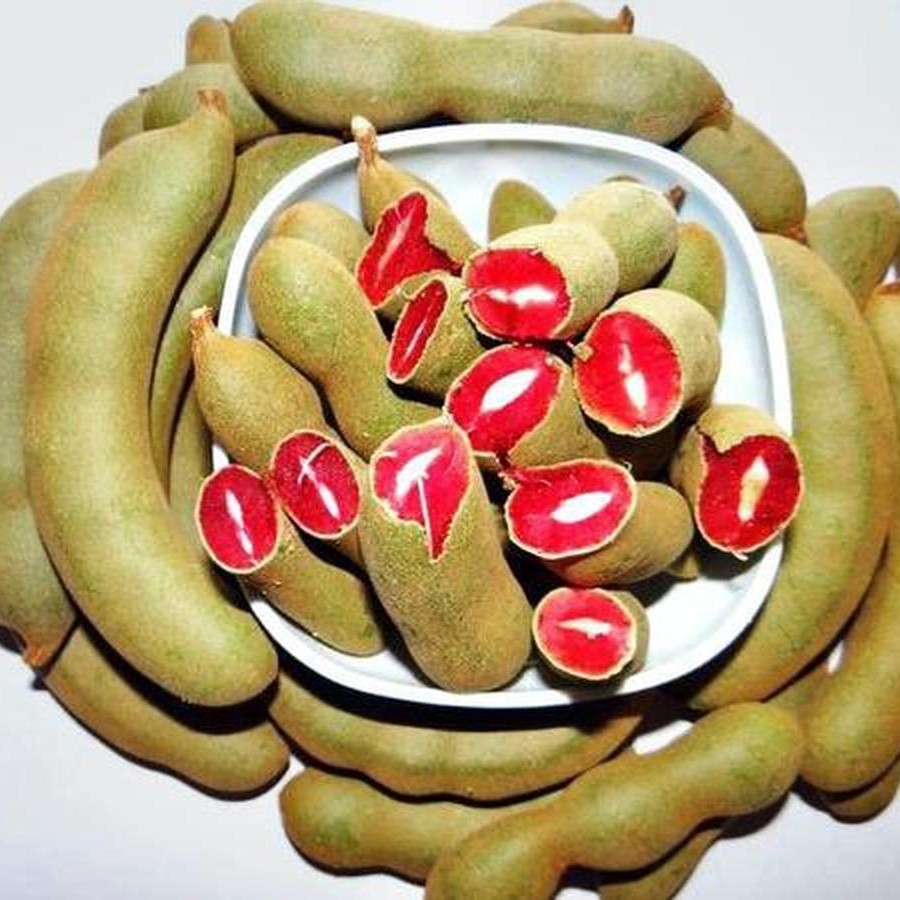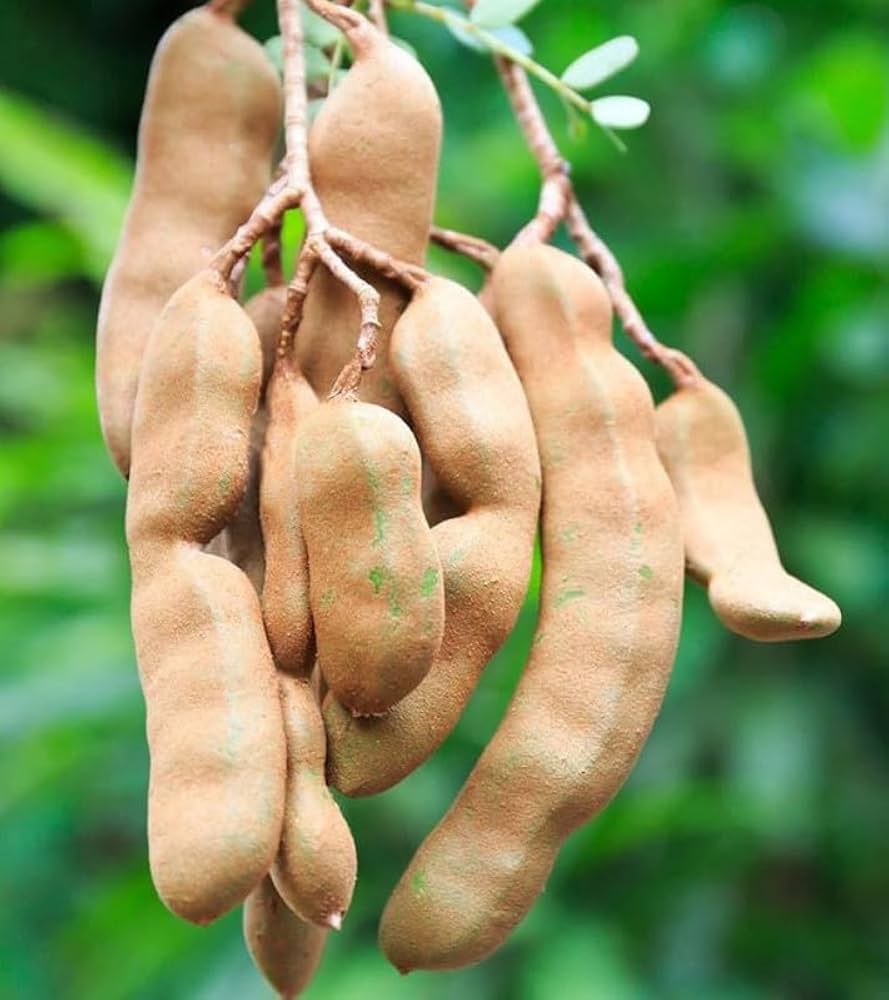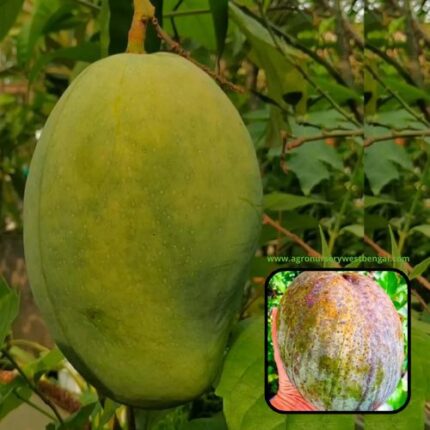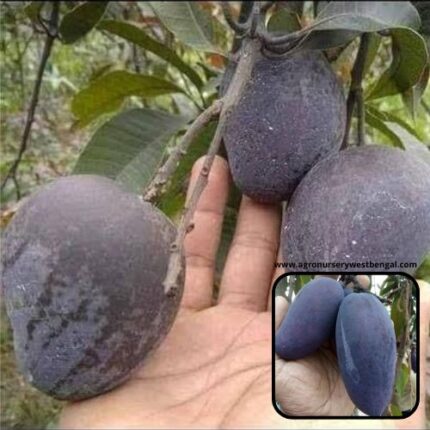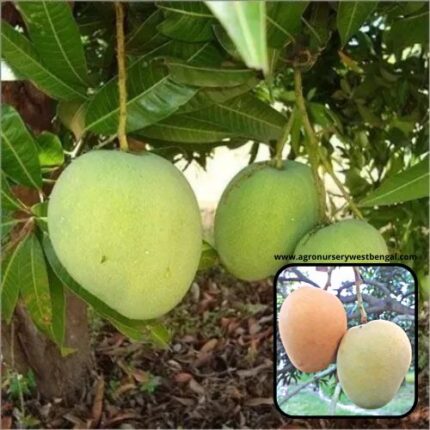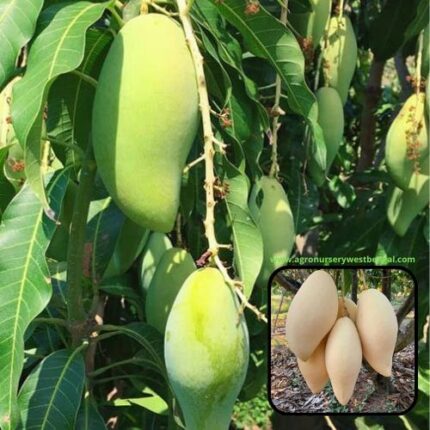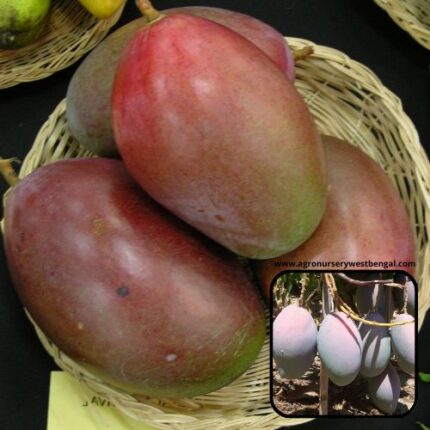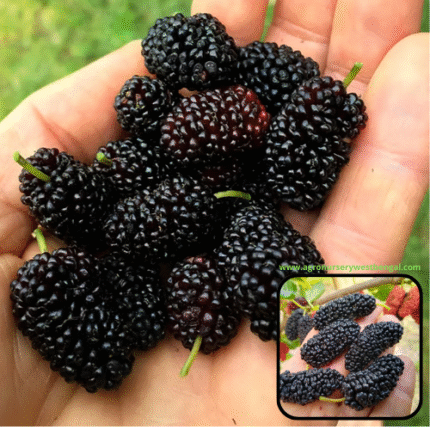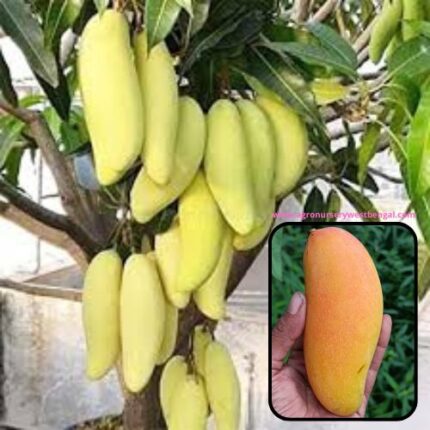
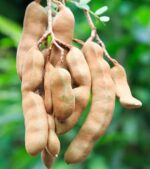
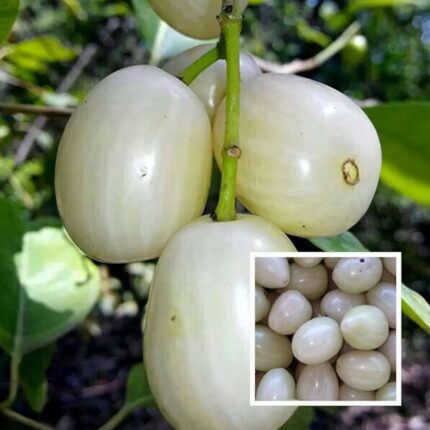
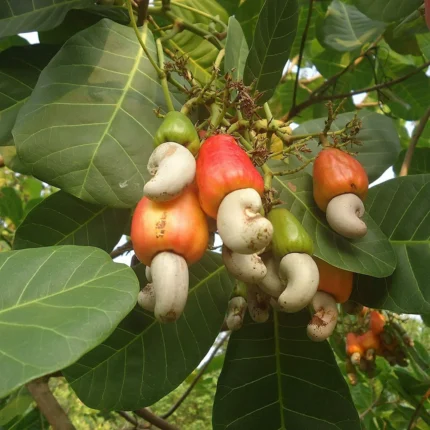
Red Imli fruit plants
₹899 Original price was: ₹899.₹549Current price is: ₹549.
“Red Imli” refers to a specific variety of tamarind (Tamarindus indica) where the fruit pulp, instead of the typical dark brown, develops a distinct reddish hue when ripe. The word “Imli” is the Hindi word for tamarind, widely used in India and other parts of South Asia.
Here’s a detailed description of Red Imli fruit:
1. The Plant (Tree):
- Tree Type: Like all tamarind trees, the “Red Imli” comes from a large, long-lived, medium-growth tree that can reach up to 25 meters (80 feet) in height. It has a spreading canopy and dense foliage.
- Leaves: The leaves are alternately arranged, paripinnately compound, with bright green leaflets that close up at night.
- Flowers: The tree produces small, inconspicuous flowers with yellow petals streaked with orange or red.
2. The Fruit (Pods):
- Form: The fruit of the tamarind is an indehiscent legume, commonly referred to as a “pod.” These pods are typically 12 to 15 cm (4.5 to 6 inches) in length.
- Outer Shell: The pods have a hard, brittle, and typically brown or reddish-brown shell that must be cracked open to access the pulp.
- Pulp Color: This is the defining characteristic of “Red Imli.” While common tamarind varieties have a dark brown, sticky pulp, Red Imli (or Red Tamarind) varieties possess a pulp that is distinctly reddish or reddish-brown. This vibrant color is often due to the presence of anthocyanins, natural pigments.
- Internal Structure: Inside the pod, the fleshy, juicy pulp surrounds several somewhat flattened, glossy brown seeds. The pulp is fibrous, with strands running through it.
- Texture: The pulp is sticky, dense, and can be quite moist, especially when fresh.
3. Taste and Flavor Profile:
- Sweet-Tangy Balance: Red Imli is typically categorized as a “sweet tamarind” variety. This means it offers a milder tang and a more pronounced sweetness compared to the highly sour common tamarind.
- Milder Acidity: While it still has that characteristic tamarind acidity, it’s less intense, making it more palatable for direct consumption.
- Subtle Flavor Notes: The flavor is a balanced combination of sweet and tart, often described as having fruity notes. It’s refreshing and can be quite addictive for those who enjoy the unique tamarind taste without overwhelming sourness.
4. Ripeness:
- The fruit is mature when the shell is hard and the pulp has developed its characteristic reddish-brown color and sweet-tangy flavor.
5. Culinary Uses: Red Imli, especially the sweet varieties, is highly versatile:
- Fresh Consumption: It’s often eaten raw as a snack, simply by cracking open the pod and consuming the pulp.
- Sweet Dishes: Its balanced sweetness makes it ideal for:
- Candies and Snacks: Commonly processed into sweet tamarind candies, bars, or paste for snacking.
- Desserts: Used in jams, jellies, and sometimes in refreshing desserts.
- Beverages: Makes delicious and unique juices and refreshing drinks.
- Savory Dishes (with a sweeter profile):
- While less commonly used for the intense souring agent in very savory curries (where traditional sour tamarind excels), it can be used in chutneys, sauces, and marinades where a sweeter, milder tang is desired.
- Popular in Southeast Asian cuisines for its unique flavor profile.
6. Nutritional Value: Like other tamarind varieties, Red Imli is nutritious:
- Rich in Vitamins: Good source of Vitamin C (antioxidant), B vitamins (Thiamine, Riboflavin, Niacin).
- Minerals: Contains important minerals like potassium, magnesium, phosphorus, iron, and calcium.
- Dietary Fiber: High in dietary fiber, which aids digestion and helps prevent constipation.
- Antioxidants: Contains various polyphenols, flavonoids, and carotenoids, which contribute to its antioxidant properties. The reddish color of Red Imli may indicate higher levels of anthocyanins, which are potent antioxidants.
- Health Benefits: Associated with various health benefits including improved digestion, heart health, blood sugar regulation, anti-inflammatory properties, and immune boosting.
In summary, “Red Imli” is a prized variety of tamarind known for its appealing reddish pulp and a distinctly sweeter, less tart flavor profile, making it excellent for direct consumption and a wide range of culinary applications, particularly in sweet and subtly tangy dishes

